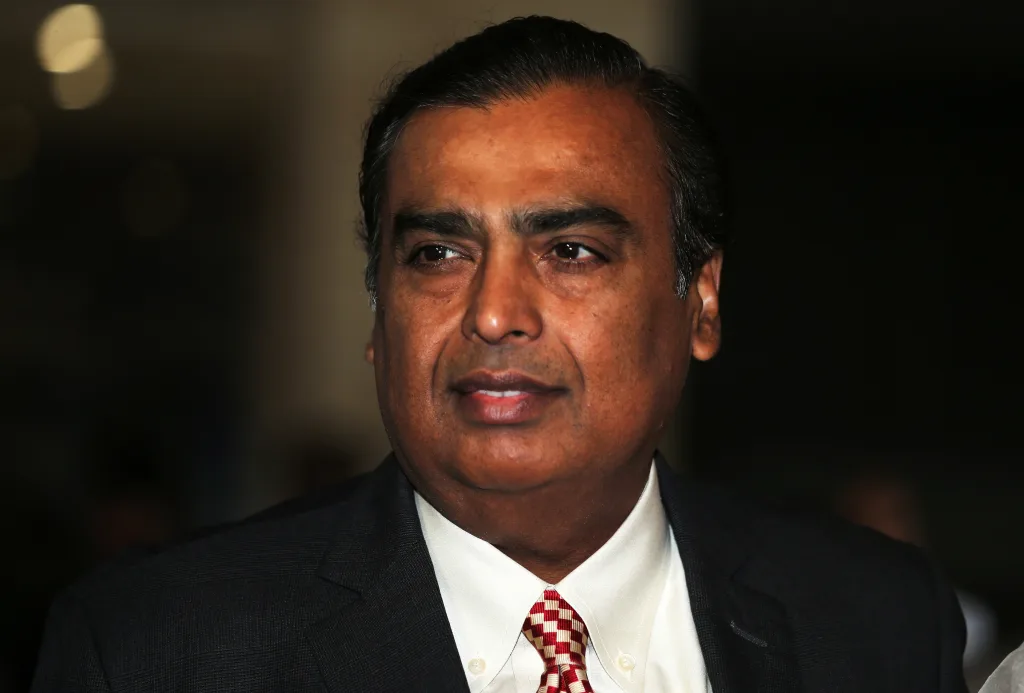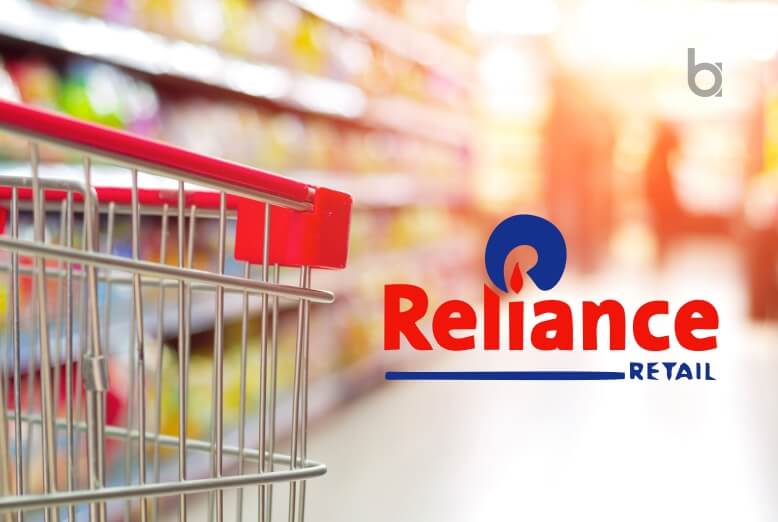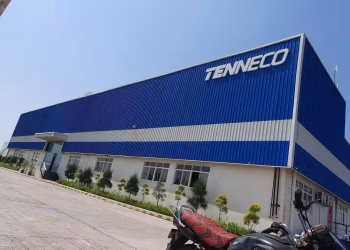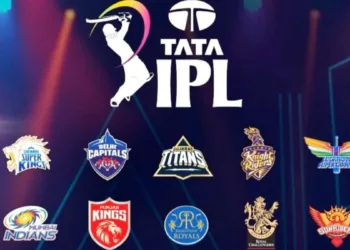Reliance Industries Q4 results reveal an impressive 9% jump in net profit to ₹19,299 crore, despite widespread sectoral volatility affecting many Indian conglomerates. This robust performance underscores the company’s resilience in challenging market conditions, particularly when several competitors have reported underwhelming figures.
The latest quarterly earnings, announced by India’s most valuable company, show significant growth across multiple business segments. Notably, Jio’s expanding 5G network and rising Average Revenue Per User (ARPU) have contributed substantially to the overall financial health.
Additionally, the retail division has strengthened through strategic store network recalibration and expansion into quick commerce, while the traditional oil-to-chemicals segment faced certain margin pressures but maintained operational efficiency. This balanced performance consequently reinforces Reliance’s reputation for maintaining growth through its diversified business model.
Table of Contents

Reliance Reports 9% Profit Jump Amid Sectoral Volatility
Reliance Industries has posted strong financial results for the fourth quarter of FY25, showcasing the company’s ability to navigate complex market conditions. The conglomerate reported a net profit attributable to shareholders of ₹19,407 crore, exceeding analyst expectations of ₹18,820 crore according to a Moneycontrol poll.
Overview of Q4 FY25 results
The fourth quarter performance demonstrates Reliance’s operational strength in a challenging business climate. Revenue for the three months ended March 31 increased by 8.8% year-on-year to ₹2.88 lakh crore, primarily driven by growth in digital services, retail, and oil-to-chemicals businesses. Simultaneously, consolidated earnings before interest, taxes, depreciation, and amortization (EBITDA) reached a record ₹48,737 crore, marking a 3.6% rise from the previous year.
Pre-minority net profit grew to ₹22,611 crore, whereas profit before tax improved by 5% to ₹29,103 crore. Although quarterly capital expenditure rose to ₹36,041 crore, it remained fully covered by cash generation of approximately ₹40,000 crore, keeping net debt relatively stable at ₹1.17 lakh crore.
Mukesh D. Ambani, Chairman and Managing Director of Reliance Industries, commented on the results: “FY2025 has been a challenging year for the global business environment, with weak macro-economic conditions and a shifting geo-political landscape. Our focus on operational discipline, customer-centric innovation and fulfilling India’s growth requirements has helped Reliance deliver a steady financial performance during the year.”
Key financial highlights
The company’s diverse business segments showed varying performance levels, illustrating both strengths and challenges:
- Digital Services (Jio): Emerged as a standout performer with EBITDA surging 18.5% year-on-year. Jio Platforms reported a quarterly profit of ₹7,022 crore, representing a 25.7% increase from ₹5,587 crore in the same quarter last year. Revenue from operations rose impressively by 17.7% to ₹33,986 crore.
- Retail Division: Continued its growth trajectory with EBITDA climbing 14.3% to ₹6,711 crore. Gross revenue increased by 15.7% to ₹88,620 crore, and net profit jumped 29.1% to ₹3,545 crore compared to ₹2,746 crore a year ago.
- Oil-to-Chemicals (O2C): Displayed mixed results with revenue growing by 15.4% to ₹1.64 lakh crore due to higher volumes and increased domestic product placement. However, EBITDA declined by 10% year-on-year to ₹15,080 crore, primarily due to:
- Sharp fall in transportation fuel cracks
- Lower polyester chain margins
- Though partially offset by higher refinery utilization and feedstock flexibility
- Oil & Gas Segment: Faced headwinds with EBITDA dropping 8.6% to ₹5,123 crore on lower KG-D6 output, weaker coal-bed-methane price, and one-time maintenance costs. Segment margins contracted significantly, sliding 720 basis points to 79.5%.
For the full financial year FY25, the company reported solid growth across key metrics:
- Consolidated revenue increased 7.1% to ₹10.71 lakh crore
- EBITDA rose 2.9% to ₹1.83 lakh crore
- Net profit grew 2.9% to ₹81,309 crore
- Oil-and-gas EBITDA reached an all-time high of ₹21,188 crore
- Retail arm’s EBITDA crossed the ₹25,000 crore milestone
- Jio Platforms’ profit exceeded ₹25,000 crore, up 22%
Furthermore, Reliance has achieved another significant milestone by becoming the first Indian company to surpass the ₹10 lakh crore mark in net worth, following its earlier achievements of exceeding ₹10 lakh crore in annual revenue and ₹20 lakh crore in market capitalization last year.
In terms of operational performance, the oil-to-chemicals business hit a record throughput of 80.5 million tons in FY25, with saleable output of 71.2 million tons as both refineries operated near peak utilization. The business recorded substantial increases in domestic fuel placements, with gasoline volumes up 42%, gasoil up 33%, and aviation turbine fuel up by 62%.

Jio Expands 5G Reach and Boosts ARPU
Jio strengthened its position as a digital services powerhouse in Q4 FY25, with impressive subscriber growth and financial metrics driving Reliance Industries’ telecommunications segment forward. The telecom and streaming business segment achieved remarkable performance across multiple parameters, contributing substantially to Reliance’s overall positive results.
Subscriber growth and ARPU rise
Reliance Jio added 6.1 million net subscribers during the fourth quarter, continuing its strong acquisition momentum. More impressively, the average revenue per user (ARPU), a critical metric for telecom companies, improved 13.5% year-on-year to Rs 206.2 per user per month, reflecting successful tariff revisions and increasing service adoption.
“Jio has become the world’s largest data company with 191 million 5G users,” reported Anshuman Thakur, Senior Vice President at Jio Platforms. This massive 5G user base represents a significant achievement in the company’s network expansion strategy.
The company’s profit growth has been equally noteworthy. Jio Platforms’ profit for the fourth quarter stood at Rs 7,022 crore, marking a substantial 25.7% increase from Rs 5,587 crore in the same quarter of the previous year. Similarly, revenue from operations rose 17.7% to Rs 33,986 crore in the March quarter, demonstrating robust commercial execution.
For the full financial year 2024-25, revenue from operations grew to Rs 1.28 lakh crore from Rs 1.09 lakh a year ago. The digital services segment’s EBITDA surged 18.5% year-on-year, further solidifying its position as a major profit center within the Reliance ecosystem.
Impact of 5G expansion on revenue
Beyond mobile services, Jio’s home connectivity business has emerged as another growth driver. As Thakur explained, “Growing 5G subscriber mix and accelerated home connects is driving the company’s industry-leading traffic growth.”
The home segment showed impressive metrics:
- JioHome subscribers crossed 18 million, adding 1.5 million in the quarter alone
- AirFiber subscribers surpassed 5.6 million
- In home wireline, Jio captured 90% of industry net additions, five times higher than its nearest competitor in the trailing six months
This domination in fixed-line additions positions Jio favorably in the broadband market. “Jio is on track to connect 100 million homes,” Thakur confidently stated, outlining the company’s ambitious growth roadmap.
The company’s network capabilities were demonstrated at scale during the Mahakumbh mela, one of the world’s largest gatherings. Akash M. Ambani, Chairman of Reliance Jio Infocomm, highlighted this achievement: “Jio is proud to have served millions of users at world’s largest congregation of people, the Mahakumbh mela where its network scalability and flexibility was well demonstrated.”
Looking forward, Jio plans to expand beyond connectivity. “Jio is working on enabling large scale AI infrastructure and services that will add an intelligence layer to all Jio services,” Akash Ambani noted, signaling the company’s intention to move up the digital value chain.
The telecom arm’s performance has effectively offset softer earnings in Reliance’s energy businesses. Jio Platforms’ profit topped Rs 25,000 crore for the full year, up 22%, making it a crucial contributor to Reliance Industries’ overall profit jump of 9% to Rs 19,299 crore. Indeed, the company’s consistent investment in digital infrastructure continues to yield dividends, positioning it well for sustained growth in an increasingly digital economy.

Retail Business Strengthens with Quick Commerce and Premium Formats
Reliance Retail’s strategic recalibration efforts paid off handsomely in Q4 FY25, with net profit surging 29.1% year-on-year to Rs 3,545 crore as the retail arm sharpened its focus on operational efficiency, premium formats and quick commerce expansion.
Store network recalibration
Reliance Retail undertook a methodical approach to its retail footprint during FY25, opening 2,659 new stores while simultaneously rationalizing underperforming locations. This strategic reshuffling resulted in a final store count of 19,340 with a total retail area of 77.4 million square feet.
“In FY25, the business focused on a strategic recalibration of our store network, aimed at improving operational efficiencies and long-term sustainability,” said Mukesh Ambani, Chairman of Reliance Industries. The company’s retail division posted robust financial metrics despite this transitional phase, with gross revenue rising 15.7% to Rs 88,620 crore in Q4 and EBITDA climbing 14.3% to Rs 6,711 crore.
For the full fiscal year, Reliance Retail recorded gross revenue of Rs 3.30 lakh crore, representing 7.9% growth over the previous year. Concurrently, retail business EBITDA grew 8.6% to Rs 25,053 crore, crossing the Rs 25,000 crore milestone for the first time.
Growth in hyperlocal deliveries and premium products
The hyperlocal delivery segment emerged as a standout performer, with quick commerce operations recording a 2.4-fold sequential jump. Dinesh Taluja, CFO of Reliance Retail, highlighted that the company’s under-30-minute delivery service now reaches almost 2,000 stores, providing “a much wider reach than any other quick commerce player.” He emphasized, “These numbers will scale up in the coming years.”
Moreover, the company reported strengthening demand for premium offerings across its retail portfolio. “The retail arm is seeing a strong demand for niche and premium products,” noted Taluja. This premium tilt was evident in the consumer electronics segment, which posted “a healthy mid-single digit growth amid early summer onset.” Looking ahead, Taluja anticipated robust air conditioner sales “due to the prediction of a hot summer.”
Meanwhile, Reliance’s fast-moving consumer goods unit, launched merely two years ago, has rapidly ascended to become “the fastest-growing FMCG entrant in India” with impressive sales of Rs 11,450 crore. The company’s house brands have gained significant market traction, with Taluja revealing that “Campa and Independence are growing rapidly and Campa has already got double digit market share.”
Isha M. Ambani, Executive Director of Reliance Retail Ventures Limited, attributed these results to “improved efficiencies, innovative formats, a sharper product mix, and continued investments in technology and customer experience.”

Oil-to-Chemicals and Oil & Gas Segments Face Margin Pressures
Amid broader strength across Reliance’s portfolio, the energy segments presented a mixed picture in Q4 FY25, with robust operational metrics counterbalanced by market-driven margin compression. While the O2C business posted strong volume growth, both chemical and exploration divisions grappled with pricing headwinds.
Record throughput but lower margins
The oil-to-chemicals division achieved unprecedented operational throughput in FY25, processing a record 80.5 million tons with saleable output reaching 71.2 million tons as both refineries operated near peak utilization. This operational excellence translated into significantly higher domestic fuel placements:
- Gasoline volumes surged 42%
- Gasoil placements increased 33%
- Aviation turbine fuel deliveries jumped 62%
Nevertheless, despite these volume gains, O2C EBITDA fell 10% year-on-year to Rs 15,080 crore, primarily due to a sharp decline in transportation fuel crack spreads and weakened polyester chain margins. The company partially mitigated these headwinds through enhanced refinery utilization and strategic feedstock flexibility.
Quarterly revenue for the O2C business grew substantially by 15.4% to Rs 1.64 lakh crore from Rs 1.42 lakh crore in the year-ago period, driven by higher volumes and expanded domestic market presence. For the full fiscal year, O2C revenue stood at Rs 6.26 lakh crore, representing an 11% increase over FY24.
Oil & Gas EBITDA trends and challenges
In contrast to its annual performance, Reliance’s oil and gas segment faced headwinds in the fourth quarter. Quarterly EBITDA dropped 8.6% to Rs 5,123 crore, with segment margins declining dramatically by 720 basis points to 79.5%. This contraction stemmed from lower KG-D6 output, weaker coal-bed-methane pricing, and one-time maintenance expenses.
The quarterly revenue reached Rs 6,440 crore, supported by higher production volumes yet offset by reduced price realization from the KG-D6 field. Specifically, average KGD6 gas price realization fell to $9.65/MMBTU in FY25 compared to $10.1/MMBTU in FY24, while CBM gas prices dropped more significantly to $10.95/MMBTU from $14.43/MMBTU the previous year.
Even so, Sanjay Roy, Executive Vice-President for Exploration and Production, expressed optimism: “We should be on steady ground in terms of gas prices in the coming years. There will be some amount of volatility, but we feel from an Indian market standpoint, it should be all right.”
Ultimately, despite quarterly challenges, the segment delivered its highest ever annual EBITDA of Rs 21,188 crore, increasing 4.9% year-on-year with FY25 revenue growing 3.2% to Rs 25,211 crore.
Diversification Strategy Shields Reliance from Market Shocks
Reliance Industries’ strategic diversification across multiple business segments proved instrumental in delivering a resilient fourth-quarter performance, effectively insulating the conglomerate from sector-specific market shocks that impacted many competitors.
How multiple engines of growth balance risks
The company’s multi-sector approach provided clear evidence of risk mitigation in Q4 FY25, as stronger-performing units compensated for segments facing headwinds. Digital services emerged as a standout performer with EBITDA surging 18.5%, while retail operations delivered 14.3% EBITDA growth. These robust results effectively counterbalanced challenges in traditional energy businesses, where O2C EBITDA declined 10% and oil-and-gas EBITDA dropped 8.6% to Rs 5,123 crore.

This balanced portfolio approach yielded tangible financial benefits:
- Cash generation reached nearly Rs 40,000 crore, comfortably covering capital expenditure of Rs 36,041 crore
- Net debt remained stable at Rs 1.17 lakh crore despite substantial investment
- Full-year net profit grew 2.9% to Rs 81,309 crore despite volatile energy markets
In effect, when transportation fuel crack spreads fell and polyester chain margins weakened, the company’s consumer-facing businesses provided stability. Likewise, record throughput in O2C operations (80.5 million tons) helped offset pricing pressures through volume gains.
Expert commentary on Reliance’s business model
Srikanth Venkatachari, CFO of Reliance Industries, highlighted the company’s resilience: “Global oil demand rose by 1.2 million barrels per day in Q4. Domestic demand is expected to remain healthy. Gasoline demand was up by 7.5%.” This focus on India’s growth requirements has proven strategically sound amid global uncertainty.
Mukesh Ambani emphasized this point: “FY2025 has been a challenging year for the global business environment, with weak macro-economic conditions and a shifting geo-political landscape. Our focus on operational discipline, customer-centric innovation and fulfilling India’s growth requirements has helped Reliance deliver a steady financial performance during the year.”
The company’s achievement of crossing Rs 10 lakh crore in net worth—following earlier milestones of Rs 10 lakh crore in annual revenue and Rs 20 lakh crore in market capitalization—validates its balanced growth strategy in the face of considerable market volatility.
Conclusion
Overall, Reliance Industries has demonstrated remarkable resilience during FY25, navigating global economic uncertainties while delivering robust financial results across its diversified business portfolio. The 9% jump in quarterly net profit to ₹19,299 crore undoubtedly stands as testament to the company’s strategic foresight and operational excellence. Jio’s expansion into 5G services, coupled with significant ARPU improvements, has established it as a cornerstone of Reliance’s growth strategy. Similarly, the retail division’s recalibration efforts have yielded impressive results, particularly in premium formats and quick commerce.
Though the oil-to-chemicals and exploration segments faced margin pressures, record throughput volumes and domestic market penetration partially offset these challenges. Consequently, Reliance’s multi-sector approach effectively balanced sectoral headwinds, allowing the conglomerate to maintain its growth trajectory despite volatile market conditions. This balanced performance has enabled Reliance to achieve significant milestones, including becoming the first Indian company to surpass the ₹10 lakh crore mark in net worth.
Reliance Industries’ Q4 results certainly reinforce the effectiveness of its diversification strategy. The company’s focus on customer-centric innovation, operational discipline, and alignment with India’s growth requirements has created multiple engines of growth that complement each other. These results therefore highlight why Reliance continues to maintain its position as India’s most valuable company, with a business model designed to thrive even as individual sectors experience temporary headwinds or market disruptions.








